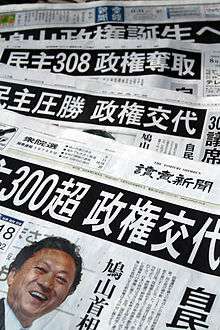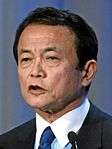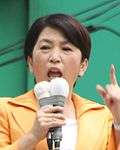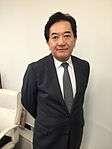Japanese general election, 2009
| | |||||||||||||||||||||||||||||||||||||||||||||||||||||||||||||||||||||||||||||||||||||||||||||||||||||||||||||||||||||||||||||||||||||||||||||||||||||||||||||||||||||||
| |||||||||||||||||||||||||||||||||||||||||||||||||||||||||||||||||||||||||||||||||||||||||||||||||||||||||||||||||||||||||||||||||||||||||||||||||||||||||||||||||||||||
| |||||||||||||||||||||||||||||||||||||||||||||||||||||||||||||||||||||||||||||||||||||||||||||||||||||||||||||||||||||||||||||||||||||||||||||||||||||||||||||||||||||||
|
| |||||||||||||||||||||||||||||||||||||||||||||||||||||||||||||||||||||||||||||||||||||||||||||||||||||||||||||||||||||||||||||||||||||||||||||||||||||||||||||||||||||||
| Parliamentary districts won by | |||||||||||||||||||||||||||||||||||||||||||||||||||||||||||||||||||||||||||||||||||||||||||||||||||||||||||||||||||||||||||||||||||||||||||||||||||||||||||||||||||||||
| |||||||||||||||||||||||||||||||||||||||||||||||||||||||||||||||||||||||||||||||||||||||||||||||||||||||||||||||||||||||||||||||||||||||||||||||||||||||||||||||||||||||
 |
| This article is part of a series on the politics and government of Japan |
|
Related topics |
|
|
A general election for the Japanese House of Representatives was held on August 30, 2009. The opposition Democratic Party (DPJ) defeated the ruling coalition (Liberal Democratic Party (LDP) and New Komeito Party) in a sweeping victory, winning 221 of the 300 electoral districts and receiving 42.4% of the proportional block votes for another 87 seats, a total of 308 seats to only 119 for the LDP (64 districts and 26.7% of the proportional votes).[1][2][3]
Under Japan's constitution, this result virtually assured DPJ leader Yukio Hatoyama would be the next Prime Minister of Japan. He was formally named to the post on September 16, 2009.[4] Prime Minister Taro Aso conceded late on the night of August 30, 2009 that the LDP had lost control of the government, and announced his resignation as party president.[5] A leadership election was held on September 28, 2009.
The 2009 election was the first time since World War II that voters mandated a change in control of the government to an opposition political party.[6] It marked the worst defeat for a governing party in modern Japanese history, was only the second time the LDP lost a general election since its formation in 1955, and was the first time that the LDP lost its status as the largest party in the lower house; the only other break in LDP control since 1955 had been for a 3-year period from 1993 to 1996 (first 11 months in opposition, then participating in a coalition government under a Socialist prime minister).[7]
Background
Developments towards the election
The last general election took place in 2005 in which the LDP, led by popular prime minister Junichiro Koizumi, received 38.2% of the proportional block votes and 47.8% of the district votes cast (the next largest party, the DPJ, received 31% in the proportional and 36.4% in the district vote). Due to the characteristics of the Japanese election system, the LDP ended up with 296 seats in the Lower House (61.6%), which enabled Koizumi to complete the privatization of Japan Post. Since then Japan has had three further prime ministers (Shinzō Abe, Yasuo Fukuda and Taro Aso) who have come to power without there being a general election.
On September 1, 2008, Yasuo Fukuda abruptly announced he was retiring as leader. Taro Aso won the subsequent LDP leadership election, which was held on September 22, 2008.[8] Media sources speculated that, in the wake of a recent change in leadership, Prime Minister Taro Aso might call elections in late October or early November 2008 while his popularity was still high,[9]
There were expectations that the steady decline and numerous scandals of the LDP might lead to the complete extinction of the party and the creation of a new political system, with actual ideologically coherent parties emerging instead of the current system of a shared interest in power with stark ideological differences.[10]
In late June 2009, there were rumours of a planned election date in early August 2009.[11] In prefectural elections in Tokyo, the LDP again lost a lot of seats and was for the first time since 1965 not the largest party in the prefectural assembly. The next day, Aso confirmed these rumours by calling for an election on August 30, 2009.[12]
As soon as the election was called, a campaign was underway by a group of LDP Diet Members to replace Aso as leader. Fully one-third of the parliamentary party (including finance minister Kaoru Yosano) were reported to have signed a petition calling for an urgent party meeting to discuss the issue. The BBC reported LDP critics of Aso asserting that an election with him still as leader would be "political suicide".[13] Prime Minister Aso dissolved the House of Representatives on July 21, 2009.[14] The official campaign started on August 18, 2009.[15]
Former LDP minister Yoshimi Watanabe announced the foundation of a new party, Your Party, on August 8, 2009.[16]
Policy platforms
The DPJ's policy platforms include: a restructuring of civil service; a monthly allowance for families with children (at 26000 yen per child); a cut in the fuel tax; income support for farmers; free tuition for public high schools; the banning of temporary work in manufacturing;[17] raising the minimum wage to 1000 yen; and the halting of any increase in sales tax for the next four years.[15][18][19]
The LDP's policy platforms are similar to the DPJ's. A New York Times article on August 28, 2009 noted both platforms offer little on economic policies.[20]
Pre-election polls
Before the dissolution of the lower house, National weekly magazines had been citing analysts predicting a big loss for the ruling coalition which held two-thirds of the seats in the House of Representatives. Some (e.g., Shūkan Gendai[21]) warned that the LDP could lose as much as half of that. Many based their predictions on the low approval rating of the Prime Minister Taro Aso and the devastating loss that the LDP suffered in the earlier prefectural election in Tokyo. On August 20 and 21, 2009, Asahi Shimbun and Yomiuri Shimbun, leading national newspapers, and Nikkei Shimbun, a financial daily, reported that the DPJ was poised to win over 300 of the 480 contested seats.[22][23][24]
On August 22, 2009, Mainichi Shimbun went further to predict that the DPJ could win over 320 seats, meaning almost all DPJ candidates would win.[25] Mainichi noted that the DPJ appeared to be doing well in the western part of Japan, a traditional stronghold of the LDP, and that the LDP could lose all of its single-member constituency seats in 15 prefectures, including Hokkaidō, Aichi, and Saitama.[26] Also, according to Mainichi, the Japanese Communist Party will probably retain its previous 9 seats, while the Komeito Party and the Social Democratic Party may lose some of their shares.
According to a poll conducted on August 22, 2009 by the Yomiuri Shimbun, Japan's largest newspaper, 40 percent said they would vote for the DPJ, while 24 percent for the LDP.[27]
Candidates by party
| Party | Number of Candidates | Gender of Candidates | Proportional representation | Holding seats at dissolution | |||||
|---|---|---|---|---|---|---|---|---|---|
| Male | Female | Constituencies | Proportional representation | ||||||
| Liberal Democratic Party (LDP) | 326 | 299 | 27 | 306 | 37 | 303 | |||
| New Komeito Party (NKP) | 51 | 47 | 4 | 8 | 43 | 31 | |||
| Japan Renaissance Party (JRP) | 1 | 1 | 0 | 1 | 0 | 1 | |||
| Democratic Party (DPJ) | 330 | 284 | 46 | 271 | 59 | 112 | |||
| Social Democratic Party (SDP) | 37 | 25 | 12 | 31 | 6 | 7 | |||
| People's New Party (PNP) | 18 | 17 | 1 | 9 | 9 | 5 | |||
| New Party Nippon (NPN) | 8 | 8 | 0 | 2 | 6 | 0 | |||
| Japanese Communist Party (JCP) | 171 | 119 | 52 | 152 | 19 | 9 | |||
| Your Party (YP) | 15 | 12 | 3 | 14 | 1 | - | |||
| New Party Daichi (NPD) | 4 | 3 | 1 | 0 | 4 | 1 | |||
| Happiness Realization Party (HRP) | 337 | 262 | 75 | 288 | 49 | 0 | |||
| Essential Party (EP) | 2 | 1 | 1 | 0 | 2 | 0 | |||
| World Economic Community Party (WECP) | 1 | 1 | 0 | 1 | 0 | 0 | |||
| Freeway Club Party (FCP) | 1 | 1 | 0 | 1 | 0 | 0 | |||
| Smile Japan Party (SJP) | 1 | 1 | 0 | 1 | 0 | 0 | |||
| Forest Sea Party (FSP) | 1 | 1 | 0 | 1 | 0 | 0 | |||
| Independent | 70 | 61 | 9 | 70 | -[28] | 9 | |||
| Total | 1,374 | 1,145 | 229 | 1,139 | 235 | 478[29] | |||
Results

(August 31, 2009)

Democratic Party (308)
Liberal Democratic Party (119)
Komeito Party (21)
Communist Party (9)
Social Democratic Party (7)
Your Party (5)
People's New Party (3)
Independents / Others (8)
The DPJ swept the LDP from power in a massive landslide, winning 308 seats (out of a total of 480 seats), while the LDP won only 119 seats[1] - the worst defeat for a sitting government in modern Japanese history. This was in marked contrast to the 1993 election, the only other time the LDP has lost an election. In that election, the LDP remained by far the largest party in the House with well over 200 seats, despite losing its majority. However, in the 2009 election the LDP was nearly 200 seats behind the DPJ. Of 83 Koizumi Children who became new LDP representatives in 2005, only 10 were reelected.
The DPJ won a strong majority in the House of Representatives, thus virtually assuring that Hatoyama would be the next prime minister. Under the Constitution, if the House of Representatives and the House of Councilors cannot agree on a choice for prime minister, the choice of the House of Representatives is deemed to be that of the Diet. Hatoyama was nominated as prime minister on September 16 and formally appointed later that day by Emperor Akihito.
However, the DPJ was just short of a majority in the House of Councillors, and fell just short of the 320 seats (a two-thirds majority) needed to override negative votes in the upper chamber. Hatoyama was thus forced to form a coalition government with the Social Democratic Party and People's New Party.[30]
| ↓ | |||||||||
| 308 | 7 | 3 | 1 | 1 | 9 | 5 | 6 | 21 | 119 |
| Democratic Party | S D P |
P N P |
N P N |
N P D |
J C P |
Y P |
I | N K P |
Liberal Democratic Party |
| Alliances and parties | Local constituency vote | PR block vote | Total seats | +/− | ||||||
|---|---|---|---|---|---|---|---|---|---|---|
| Votes[35] | % | Seats | Votes | % | Seats | election) | gen. election) | |||
| Democratic Party (DPJ) | 33,475,335 | 47.43% | 221 | 29,844,799 | 42.41% | 87 | 308 | | | |
| Social Democratic Party (SDP)[36] | 1,376,739 | 1.95% | 3 | 3,006,160 | 4.27% | 4 | 7 | | | |
| People's New Party (PNP) | 730,570 | 1.04% | 3 | 1,219,767 | 1.73% | 0 | 3 | | | |
| New Party Nippon[37] | 220,223 | 0.31% | 1 | 528,171 | 0.75% | 0 | 1 | | | |
| New Party Daichi | no district candidates | 433,122 | 0.62% | 1 | 1 | | | |||
| Ruling DPJ–SDP–PNP coalition & parliamentary allies | 35,802,866 | 50.73% | 228 | 35,032,019 | 49.78% | 92 | 320 | | | |
| Liberal Democratic Party (LDP) | 27,301,982 | 38.68% | 64 | 18,810,217 | 26.73% | 55 | 119 | | | |
| New Komeito Party (NKP) | 782,984 | 1.11% | 0 | 8,054,007 | 11.45% | 21 | 21 | | | |
| Japan Renaissance Party | 36,650 | 0.05% | 0 | 58,141 | 0.08% | 0 | 0 | | | |
| Opposition LDP–NKP coalition & parliamentary allies | 28,121,613 | 39.84% | 64 | 26,922,365 | 38.26% | 76 | 140 | | | |
| Japanese Communist Party (JCP) | 2,978,354 | 4.22% | 0 | 4,943,886 | 7.03% | 9 | 9 | | | |
| Your Party (YP) | 615,244 | 0.87% | 2 | 3,005,199 | 4.27% | 3 | 5 | | | |
| Others | 1,077,543 | 1.53% | 0 | 466,786[38] | 0.66% | 0 | 0 | | | |
| Independents[39] | 1,986,056 | 2.81% | 6 | – | 6 | | | |||
| Totals | 70,581,680 | 100.00% | 300 | 70,370,255 | 100.00% | 180 | 480 | | | |
| Turnout | 69.28% | 69.27% | *(vacant seats) | |||||||
Had the parties nominated a sufficient number of candidates on their proportional "block" lists, the election result would have given the DPJ two additional seats in Kinki, the YP one in Kinki and one in Tōkai. In Kinki, two seats went to the LDP, one to Kōmeitō, in Tōkai one to the DPJ.[40] For the same reason, one Democratic Kinki proportional seat fallen vacant in 2010 (Mitsue Kawakami) cannot be filled until the next general election.
| Incumbents | Party | |
|---|---|---|
| Norihiko Akagi | Former Agriculture, Forestry and Fisheries Minister | Liberal Democratic Party (LDP) |
| Seishiro Etō | Former Defense Minister | Liberal Democratic Party (LDP) |
| Tetsuma Esaki | Former Senior Vice Minister of Land, Infrastructure and Transport | Liberal Democratic Party (LDP) |
| Takashi Fukaya | Former International Trade and Industry Minister | Liberal Democratic Party (LDP) |
| Hajime Funada | Former Minister of Economic Planning Agency | Liberal Democratic Party (LDP) |
| Tetsuzo Fuyushiba | Minister of Land, Infrastructure and Transportation Minister | New Komeito Party (NKP) |
| Yoshiaki Harada | Foreign Affairs Committee Chair | Liberal Democratic Party (LDP) |
| Mitsuo Horiuchi | Former International Trade and Industry Minister | Liberal Democratic Party (LDP) |
| Yamato Inaba | Agricultural Committee Chair | Liberal Democratic Party (LDP) |
| Kiichi Inoue | Disaster Management Minister | Liberal Democratic Party (LDP) |
| Gaku Ishizaki | Former Senior Vice-Minister of Internal Affairs and Communications | Liberal Democratic Party (LDP) |
| Kosuke Ito | Committee on Fundamental National Policies Chairman | Liberal Democratic Party (LDP) |
| Shintaro Ito | Senior Vice-Minister of Foreign Affairs | Liberal Democratic Party (LDP) |
| Tatsuya Ito | Former Minister in charge of Financial Affairs | Liberal Democratic Party (LDP) |
| Yukio Jitsukawa | Former Senior Vice Minister of Justice | Liberal Democratic Party (LDP) |
| Toshiki Kaifu | Former Prime Minister of Japan | Liberal Democratic Party (LDP) |
| Yōko Kamikawa | Minister of State for Gender Equality and Social Affairs of Japan | Liberal Democratic Party (LDP) |
| Kazuo Kitagawa | Former Land, Infrastructure and Transportation Minister | New Komeito Party (NKP) |
| Tomokatsu Kitagawa | Parliamentary Secretary of the Environment | Liberal Democratic Party (LDP) |
| Kenji Kosaka | Former Education, Culture, Sports, Science and Technology Minister | Liberal Democratic Party (LDP) |
| Saburo Komoto | Senior Vice Minister of Education, Culture, Sports, Science and Technology | Liberal Democratic Party (LDP) |
| Fumio Kyuma | Former Defence Minister | Liberal Democratic Party (LDP) |
| Kenichi Mizuno | Former Senior Vice-Minister of Justice | Liberal Democratic Party (LDP) |
| Nobuhide Minorikawa | Parliamentary Vice-Minister for Foreign Affairs | Liberal Democratic Party (LDP) |
| Yoichi Miyazawa | Senior Vice-Minister of Cabinet Office | Liberal Democratic Party (LDP) |
| Shōichi Nakagawa | Former Treasury Minister | Liberal Democratic Party (LDP) |
| Taro Nakayama | Former Foreign Minister | Liberal Democratic Party (LDP) |
| Kyoko Nishikawa | Former Senior Vice-Minister of Health, Labour and Welfare | Liberal Democratic Party (LDP) |
| Kosaburo Nishime | Parliamentary Secretary of Land, Infrastructure, Transport and Tourism | Liberal Democratic Party (LDP) |
| Yuya Niwa | Former Health, Labour and Welfare Minister | Liberal Democratic Party (LDP) |
| Koji Omi | Former Treasury Minister | Liberal Democratic Party (LDP) |
| Akihiro Ota | Chief Representative of New Komeito | New Komeito Party (NKP) |
| Seiichi Ota | Agriculture, Forestry and Fisheries Minister | Liberal Democratic Party (LDP) |
| Toshitsugu Saito | Former Defence Minister | Liberal Democratic Party (LDP) |
| Takashi Sasagawa | Former General Council Chairman of LDP | Liberal Democratic Party (LDP) |
| Yoshinobu Shimamura | Former Agriculture, Forestry and Fisheries Minister | Liberal Democratic Party (LDP) |
| Junji Suzuki | Former Vice-Minister for Internal Affairs and Communications | Liberal Democratic Party (LDP) |
| Shunichi Suzuki | Former Minister of Environment Agency | Liberal Democratic Party (LDP) |
| Seiken Sugiura | Former Minister of Justice | Liberal Democratic Party (LDP) |
| Minoru Terada | Former Parliamentary Defense Secretary | Liberal Democratic Party (LDP) |
| Tōru Toida | Former Parliamentary Health Secretary | Liberal Democratic Party (LDP) |
| Kisaburo Tokai | Former Minister of Education, Culture, Sports, Science and Technology | Liberal Democratic Party (LDP) |
| Tamisuke Watanuki | President of the People's New Party, Former Speaker of the House of Representatives | People's New Party (PNP) |
| Akihiko Yamamoto | Former Senior Vice Minister of Cabinet Office | Liberal Democratic Party |
| Akiko Yamanaka | Vice-Minister of Foreign Affairs | Liberal Democratic Party (LDP) |
| Taku Yamasaki | Former Vice President of LDP | Liberal Democratic Party (LDP) |
| Hakuo Yanagisawa | Former Health, Labour and Welfare Minister | Liberal Democratic Party (LDP) |
| Okiharu Yasuoka | Former Minister of Justice | Liberal Democratic Party (LDP) |
| Yoshio Yatsu | Former Agriculture, Forestry and Fisheries Minister | Liberal Democratic Party (LDP) |
| Candidates | Party | |
|---|---|---|
| Akira Amari | Former Minister of Economy, Trade and Industry | Liberal Democratic Party (LDP) |
| Motoo Hayashi | Chairman of the National Commission on Public Safety | Liberal Democratic Party (LDP) |
| Bunmei Ibuki | Former Secretary General of LDP | Liberal Democratic Party (LDP) |
| Ichirō Kamoshita | Minister for the Environment | Liberal Democratic Party (LDP) |
| Jirō Kawasaki | Former Minister of Health, Labour and Welfare | Liberal Democratic Party (LDP) |
| Seigo Kitamura | Senior Vice-Minister of Defense | Liberal Democratic Party (LDP) |
| Yuriko Koike | Former Minister of Defense | Liberal Democratic Party (LDP) |
| Nobutaka Machimura | Former Chief Cabinet Secretary and former Foreign Affairs Minister | Liberal Democratic Party (LDP) |
| Jinen Nagase | Former Minister of Justice | Liberal Democratic Party (LDP) |
| Hidenao Nakagawa | Former Secretary General of LDP | Liberal Democratic Party (LDP) |
| Seiko Noda | Former State Minister in charge of Consumer Affairs | Liberal Democratic Party (LDP) |
| Fukushiro Nukaga | Former Finance Minister | Liberal Democratic Party (LDP) |
| Hideaki Omura | Former Vice Minister of Health, Labour and Welfare | Liberal Democratic Party (LDP) |
| Tsutomu Sato | Internal Affairs and Communications and Public Safety Minister | Liberal Democratic Party (LDP) |
| Ryu Shionoya | Minister of Education, Science and Technology | Liberal Democratic Party (LDP) |
| Tsutomu Takebe | Former Minister of Agriculture, Forestry and Fisheries | Liberal Democratic Party (LDP) |
| Naokazu Takemoto | Senior Vice-Minister of Finance | Liberal Democratic Party (LDP) |
| Kaoru Yosano | Finance Minister | Liberal Democratic Party (LDP) |
Constitutionality
In March 2011, the Supreme Court decided that the malapportionment of electoral districts in the 2009 election had been in an unconstitutional state. As in previous such rulings (elections of 1972, 1980, 1983 and 1990), the election result is not invalidated, but the vote weight disparity must be reduced by the National Diet soon. The 2009 election has been the first House of Representatives election ruled unconstitutional since the electoral reform of the 1990s and the introduction of parallel voting in single-member districts and proportional "blocks".[41] The two major parties want to use the reform to also significantly reduce the number of proportional seats as both had promised in their 2009 campaigns, but meet resistance from the smaller parties that depend on proportional seats.[42][43]
See also
- Elections in Japan
- House of Representatives of Japan
- List of Districts of the House of Representatives of Japan
- Tokyo prefectural election, 2009
- Yokohama mayoral election, 2009
References
- 1 2 "'Major win' for Japan opposition". BBC News. 2009-08-30. Retrieved 2009-08-31.
- ↑ "衆院党派別得票数・率(比例代表)". (in Japanese) Jiji. 2009-08-31.
- ↑ "衆院党派別得票数・率(選挙区)". (in Japanese) Jiji. 2009-08-31.
- ↑ "Japan's election: The vote that changed Japan". The Economist. 2009-09-03.
- ↑ From Kyung Lah (2009-08-31). "Japanese opposition set for victory; PM quits as party head". CNN. Retrieved 2009-08-31.
- ↑ Ikegami, Akira (3 February 2014). "現代日本の足跡に学ぶ(15) 「本格的」政権交代の反省". 日本経済新聞. Retrieved 3 February 2014.
09年総選挙後、「戦後初の本格的な政権交代」と指摘されました。有権者は「自民党の麻生太郎政権を支持し続けるか」「民主党の鳩山由紀夫代表を選ぶのか」という構図の下、1票を投じることができたためです。
- ↑ Stockwin, J.A.A. (2011). The rationale for coalition governments In Alisa Gaunder (Ed.) Routledge Handbook of Japanese Politics, Taylor & Francis, p. 36–47.
- ↑ Fackler, Martin (2008-09-22). "Japanese Party Chooses Aso as Leader". The New York Times. Retrieved 2010-05-05.
- ↑ Ryall, Julian (2008-09-18). "Japanese election brought forward". The Daily Telegraph. London. Retrieved 2010-05-05.
- ↑ Fackler, Martin (2009-02-20). "Japan's governing party faces political extinction". New York Times. Retrieved 2009-05-11.
- ↑ english@peopledaily.com.cn (2009-06-27). "Report: Japan's PM eyes general election in early August – People's Daily Online". English.people.com.cn. Retrieved 2009-08-31.
- ↑ "Japan PM 'calls August election'". BBC World News. 2009-07-13. Retrieved 2009-07-13.
- ↑ Buerk, Roland (2009-07-16). "Party rebels move on Japanese PM". BBC news website.
- ↑ "Japanese Parliament Is Dissolved". Reuters. 2009-07-21. Retrieved 2009-07-21.
- 1 2 "Railing against the wrong enemy". The Economist. 2009-08-20.
- ↑ english@peopledaily.com.cn. "Japan's former minister to launch party to campaign in election". English.people.com.cn. Retrieved 2009-08-31.
- ↑ Ryall, Julian (2009-08-27). "Japan election: unemployed turn on the government". London: The Daily Telegraph. Retrieved 2010-05-05.
- ↑ Hiroko Tabuchi (2009-08-03). "Opposition Woos Japan's Voters With Costly Vows". New York Times.
- ↑ Fujioka, Chisa (2009-08-21). "Japan opposition may score landslide win: media". Reuters.
- ↑ Fackler, Martin (2009-08-29). "Lost in Japan's Election Season: The Economy". The New York Times. Retrieved 2010-05-05.
- ↑ "J-CASTニュース : 未だに「視界不良」麻生政権 党内に不穏な動き". J-cast.com. 2009-07-13. Retrieved 2009-08-31.
- ↑ "Analysis: DPJ on pace to win 300 seats". Asahi Shimbun. 2009-09-20.
- ↑ "Survey: DPJ poised to win over 300 seats". Yomiuri Shimbun. 2009-09-21.
- ↑ 民主、圧勝の勢い 300議席超が当選圏 衆院選情勢調査 (in Japanese). Nikkei Shimbun. 2009-08-21.
- ↑ "DPJ could win over 320 seats in Lower House race: Mainichi poll". Mainichi Shimbun. 2009-08-22.
- ↑ 揺らぐ自民の牙城 15道県全敗か (in Japanese). Mainichi Shimbun. 2009-08-22.
- ↑ "DPJ Leader Hatoyama Says Domestic Demand Priority". Bloomberg. 2009-08-22.
- ↑ Seats for proportional representation are only for party rolls.
- ↑ A full House has 480 seats, so two were vacant at the time of dissolution.
- ↑ "Hatoyama says DPJ will form coalition even if party performs well in election". Mainichi. 2009-08-22.
- ↑ General election results final breakdown. Kyodo News. August 31, 2009.
- ↑ Psephos - Adam Carr. August 31, 2009.
- ↑ Nihon Keizai Shimbun. August 31, 2009.
- ↑ Ministry of Internal Affairs and Communications, Home Office, Election Department (総務省自治行政局選挙部): Results of the 45th House of Representatives election, complete edition (45衆結果調全体版)
- ↑ Decimals from fractional votes (anbunhyō) rounded to full numbers
- ↑ The Social Democratic Party withdrew from the ruling coalition on May 30, 2010 http://www.bbc.co.uk/news/10193171
- ↑ The New Party Nippon (Yasuo Tanaka) withdrew support for the cabinet in April 2012 http://www.kobe-np.co.jp/news/shakai/0004951857.shtml
- ↑ Happiness Realization Party (kōfuku-jitsugen-tō) 459,387, Essential Party (shintō honshitsu) 7,399
- ↑ includes 3 members of the Hiranuma Group; 2 independents joined the DPJ parliamentary group immediately after the election
- ↑ Yomiuri Shimbun, August 31, 2009: 民主、比例近畿Bで名簿登載者不足…議席は他党に
- ↑ 47 News/Kyodo News, March 28, 2011: 2・30倍の格差は「違憲状態」 09年衆院選で最高裁
- ↑ The Japan Times, October 17, 2011: Vote disparity reform faces delay over small parties
- ↑ The Japan Times, June 14, 2012: DPJ bends on Lower House reform
External links
| Wikinews has related news: Yukio Hatoyama named as Japan's new Prime Minister |
- Japanese Voters Oust Conservative Party - video report by Democracy Now!
- Two-headed Monster - analysis by C.B.Liddell Metropolis


.jpg)





